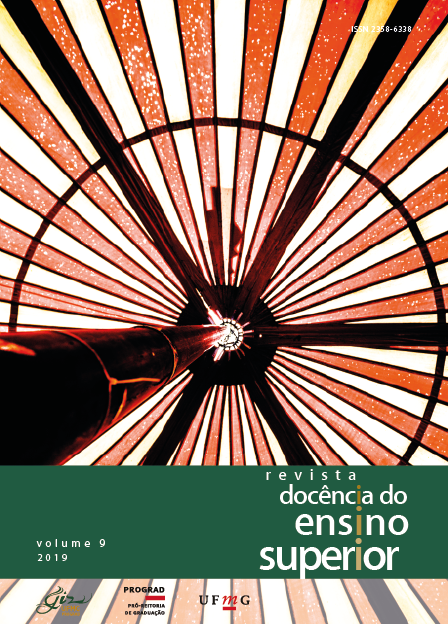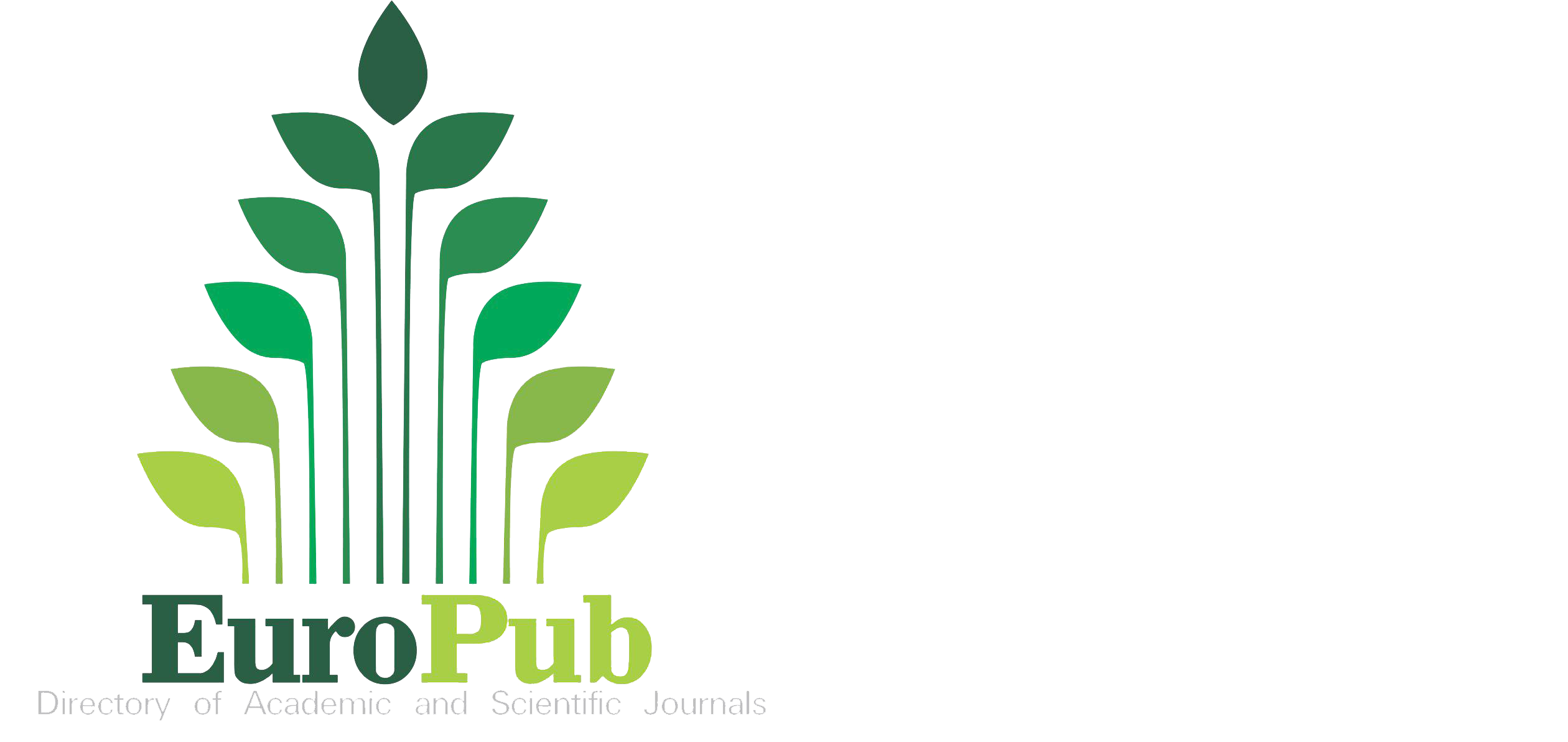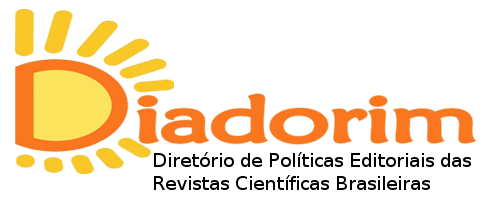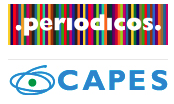The National Exam of Students’ Performance
teachers’ appreciation on the evaluation method
DOI:
https://doi.org/10.35699/2237-5864.2019.2506Keywords:
Education, Evaluation, Teachers, Health, PharmacyAbstract
The National Exam of Students' Performance (ENADE) is part of the National System for the Evaluation of Higher Education (SINAES), assessing the students' performance following the National Curricular Guidelines. The objective of this study was to analyze the opinion of professors of Pharmacy courses from public and private institutions of the state of Rio Grande do Sul in relation to ENADE. Through the Qualtrics system, 168 professors participated in the questionnaires, with a return submitted to the Discursive Textual Analysis. The answers revealed that 28,6% of them (48/168) presented favorable opinion to the evaluation method; 45.2% (76/168), moderate opinion; 14.3% (24/168), indifferent opinion; and 11,9% (20/168), unfavorable opinion. Furthermore, 22% (37/168) of the professors mentioned the assessment approach that focuses on the student. The opinion of those involved and the constant monitoring are crucial to recognize the exam’s limitations as well as the importance of ENADE as an instrument for measuring student performance, so that it becomes effectively useful in the qualification of higher education, complementing the SINAES proposal.
Downloads
References
BOFF, Paulo Roberto. Diretrizes e prática farmacêutica. Pharmacia Brasileira, Lago Sul/Brasília, v. 12, n. 84, p. 50-55, jan./fev. 2012.
BRASIL. Lei nº 9.131, de 24 de novembro de 1995. Lei do Provão. Altera dispositivos da Lei nº 4.024, de 20 de dezembro de 1961, e dá outras providências. Diário Oficial da União, Brasília, DF, 25 nov. 1995.
BRASIL. Lei nº 9.394, de 20 de dezembro de 1996. Diário Oficial da União, Brasília, DF, dez. 1996a, p. 27.833-41. Disponível em: https://www2.camara.leg.br/legin/fed/lei/1996/lei-9394-20-dezembro-1996-362578-publicacaooriginal-1-pl.html. Acesso em: 24 ago. 2013.
BRASIL. Decreto nº 2.026, de 10 de outubro de 1996. Diário Oficial da União, Brasília, DF, 11 out. 1996b. Seção 1, p. 20.545. Disponível em: https://www2.camara.leg.br/legin/fed/decret/1996/decreto-2026-10-outubro-1996-435829-norma-pe.html. Acesso em: 24 ago. 2013.
BRASIL. Lei nº 10.861, de 14 de abril de 2004. Diário Oficial da União, Brasília, DF, 15 abr. 2004. Seção 1, p. 3-4.
BRASIL. IES. e-MEC. Instituições de Educação Superior e Cursos Cadastrados. Disponível em: http://emec.mec.gov.br/. Acesso em: 5 abr. 2012.
BRASIL. INEP. SINAES. ENADE. Manual do ENADE 2016. Brasília, DF, 25 de maio de 2016. Atualizado em 1 jul. 2016. 113 p. Disponível em: http://download.inep.gov.br/educacao_superior/enade/manuais/manual_do_enade_01072016.pdf. Acesso em: 05 ago. 2016.
CECY, Carlos. Diretrizes Curriculares – Dez Anos. Boletim da Abenfarbio. Pharmacia Brasileira, Lago Sul/Brasília, v. 12, n. 80, p. 53-60, fev./mar. 2011.
DIAS SOBRINHO, José. Avaliação e transformações da educação superior brasileira (1995-2009): do Provão ao SINAES. Avaliação, Campinas, v. 15, n. 1, p. 195-224, 2010.
FURTADO, Vivian da Silva. Análise do processo de implementação das Diretrizes Curriculares Nacionais do Curso de Graduação em Farmácia no Estado do Rio de Janeiro: um estudo exploratório. 2008. Dissertação (Mestrado em Saúde Coletiva) – Instituto de Medicina Social, Universidade do Estado do Rio de Janeiro, 2008.
GRILLO, Marlene Correro; GESSINGER, Rosana Maria (org.). Por que falar ainda em avaliação? Porto Alegre: EDIPUCRS, 2010.
LEITÃO, Thiago et al. Uma análise acerca do boicote dos estudantes aos exames de avaliação da educação superior. Revista Brasileira de Educação, Rio de Janeiro, Campinas, v. 15, n. 43, p. 21-44, jan./abr. 2010.
MORAES, Roque; GALIAZZI, Maria do Carmo. Análise Textual Discursiva. Ijuí: UNIJUÍ, 2007.
MOURÃO, Lúcia Cardoso et al. Análise institucional e educação: reforma curricular nas universidades pública e privada. Revista Educação & Sociedade, Campinas, v. 28, n. 98, p. 181-210, jan./abr. 2007.
OTT, Joice Nedel. Diretrizes Curriculares Nacionais do curso de graduação em Farmácia e o Sistema de Avaliação da Educação Superior: análise crítico-reflexiva da prova do ENADE 2010. 2014. Dissertação (Mestrado em Medicina e Ciências da Saúde) – Pontifícia Universidade Católica do Rio Grande do Sul, Porto Alegre, 2014.
OTT, Joice Nedel et al. Diretrizes Curriculares da Farmácia versus ENADE: a ótica docente. Revista Internacional da Educação Superior, v. 2, n. 3, p. 552-572, 2016.
POLIDORI, Marlis Morosini. Políticas de Avaliação da Educação Superior Brasileira: Provão, SINAES, IDD, CPC, IGC e... outros índices. Avaliação, Campinas; Sorocaba (SP), v. 14, n. 2, p. 267-290, jul. 2009.
POLIDORI, Marlis Morosini; MARINHO-ARAUJO, Claisy M.; BARREYRO, Glagys B. SINAES: Perspectivas e desafios na avaliação da educação superior brasileira. Ensaio: Avaliação Políticas Públicas de Educação, Rio de Janeiro, v. 14, n. 53, p. 425-436, out./dez. 2006.
RISTOFF, Dilvo; GIOLO, Jaime. O Sinaes como Sistema. Revista Brasileira de Pós-Graduação, Brasília, v. 3, n. 6, p. 193-213, dez. 2006.
ROTHEN, José C.; BARREYRO, Gladys B. Avaliação da educação superior no segundo governo Lula: “Provão II” ou a reedição de velhas práticas?. Revista Educação & Sociedade, Campinas, v. 32, n. 114, p. 21-38, jan./mar. 2011.
Downloads
Published
How to Cite
Issue
Section
License
Authors who publish in this journal retain the copyright and grant the journal the right of first publication, with the work simultaneously licensed under the Creative Commons Attribution License which allows the sharing of work with acknowledgment of authorship and initial publication in this journal.
Authors are authorized to take additional contracts separately, for non-exclusive distribution of the version of the work published in this journal (e.g. publish in institutional repository or as a book chapter), with acknowledgment of authorship and initial publication in this journal.
Open access policy:
Revista Docência do Ensino Superior is an Open Access journal, which means that all content is available free of charge, at no cost to the user or their institution. Users may read, download, copy, distribute, print, search, or link to the full texts of the articles, or use them for any other legal purpose, without seeking prior permission from the publisher or author, provided they respect the license to use the Creative Commons used by the journal. This definition of open access is in line with the Budapest Open Access Initiative (BOAI).
























